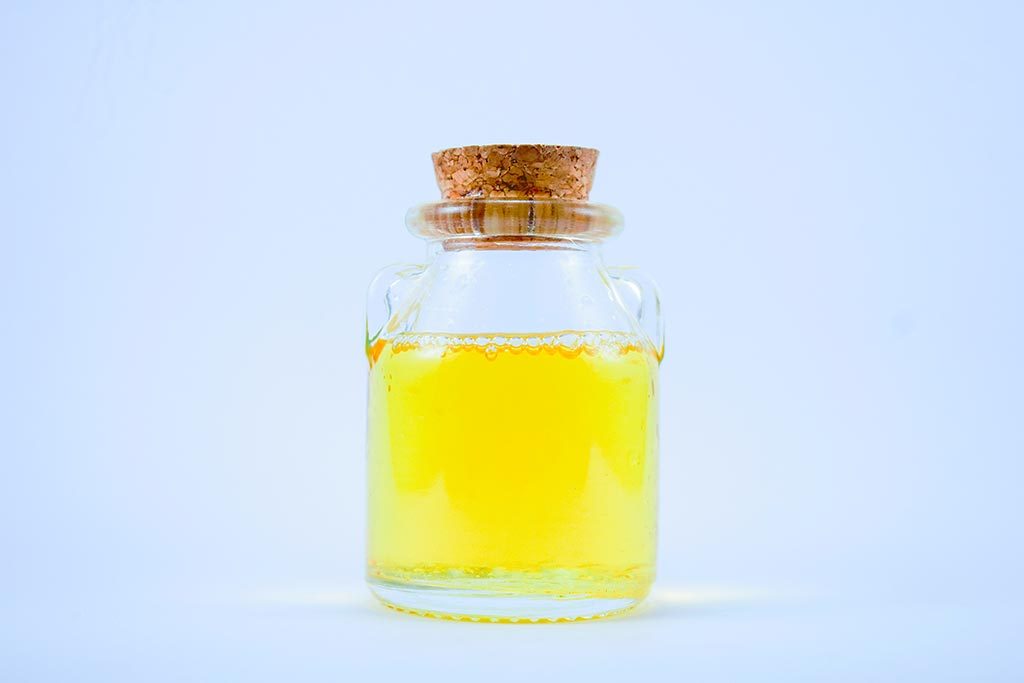Our Cistus Ladanifer oil

Cistus Ladanifer essential oil is one of the most interesting and valuable products that can be obtained from the Cistus Ladanifer plant. There are several methods to obtain this oil, however, all of the producers in Portugal that we know get their Cistus Ladanifer essential oil by using steam distillation (more on that here). This distinction is important as Cistus Ladanifer resins obtained through other methods (chemical solvents etc.) can also be steam distilled to produce oils.
How is our Cistus Ladanifer oil distilled?
As mentioned in the article on harvesting Cistus Ladanifer, the yield of this plant is very low. So low in fact that to obtain 1 litre of essential oil through steam distillation, anywhere between 1,000 and 2,000 kilograms of fresh plant material must be harvested. The stills used may vary in size, shape and materials (copper or stainless steel) but the principle of steam distillation is basically always the same:
Step 1: Heating
Using a source of energy (usually firewood), water is heated in a boiler until its hot enough to produce steam. The steam is then released into a separate part of the still that holds the plant material. The heat from the steam opens the plant cells, releasing the aromatic components contained within the plant. In the case of Cistus Ladanifer, these components come from the leaves and the twigs.
Step 2: Condensation
Tiny amounts of essential oil are transported via the steam particles into a condenser. Usually, this is a spiral-shaped tube which is surrounded by a coolant such as water. The steam enters the condenser as a vapour and exits it as a liquid.
Step 3: Separation
In the last stage, a device called an essencier (also known as an essential oil separator or florentine vase) is used to collect the liquid exiting the condenser. At 20˚C water has a density of very close to 1, while Cistus Ladanifer oil has a density of about 0.95. The difference in density may appear to be minimal, but it is this difference that makes the essential oil float on top of the water. The essencier uses this principle to separate Cistus Ladanifer essential oil from the water. With very few exceptions, almost all essential oils have a lower density than water. However, those oils that have a higher density will stay on the bottom (the water will float on top).
What does Cistus Ladanifer oil look like?
Cistus Ladanifer oil has a clear to pale yellow colour. As with many other oils, it is insoluble in water and soluble in ethanol and other oils. In the book, “375 Essential Oils and Hydrosols” by Jeanne Rose, she describes the scent of Cistus Ladanifer oil as being fragrant with a balsamic odour of musk and smoke.
Composition of Cistus Ladanifer oil
A typical bottle of our Portuguese-harvested Cistus Ladanifer essential oil has the following composition:
- α (Alpha)- Pinene: 53 %
- Camphene: 14,7 %
- Tricyclene: 2,7 %
- p-Cymene: 2,5%
- Limonene: 1,3%
- β (Beta) – Pinene 0.8%
There are of course many more ingredients in Cistus Ladanifer essential oil, but these are some of the more relevant. What you see here are ingredients that contribute to Cistus Ladanifer essential oil’s antiviral, antibacterial and antiarthritic properties. The antifungal properties of Cistus Ladanifer extracts have also been reported in this study:
- “Overall, the phenolic extract of C. ladanifer affected the growth of different Candida sp[ecies], suggesting that the compounds present in the extract could play an active role in the protection against fungi related to several diseases”
Cistus Ladanifer essential oils around the world
Cistus Ladanifer essential oils produced in Portugal have been analysed and compared to other essential oils in Spain and Morroco. The following quotes are retrieved from this study:
- “The cistus oil herein obtained was richer in amber-like compounds and had a low content of
monoterpenes when compared to the usual values found in the literature. Moreover, it presented a relatively high content of ambrox (amber odour), which usually is only reported in labdanum oil” - “Portuguese cistus oil herein characterized is richer in amber-like compounds and has a low content of hydrocarbon monoterpenes, which is desirable from the organoleptic point of view. (…) The fact that our oil already had low levels of monoterpenes constitutes an advantage for using the Portuguese plants for the production of good quality cistus oil”
With regards to antioxidant properties, Portuguese scientists compared extracts from two cistus species, cypress and eucalyptus, and published the results in this study:
- “Radical scavenging effects of phenolic and essential oils extracts of the aromatic plants Cistus ladanifer, Citrus latifolia, Cupressus lusitanica and Eucalyptus gunnii were examined and compared (…) In the essential oils extracts, the best contribution to the antioxidant activity was achieved by Cistus ladanifer”
As we’ve mentioned, Cistus Ladanifer essential oil is an oil that demands a lot of effort to produce, which means it generally commands a that’s price relative to the amount of work involved in processing it. Due to its many very interesting properties though, the work that goes into producing Cistus Ladanifer essential oil and the benefits our clients receive from it makes it all worthwhile.
